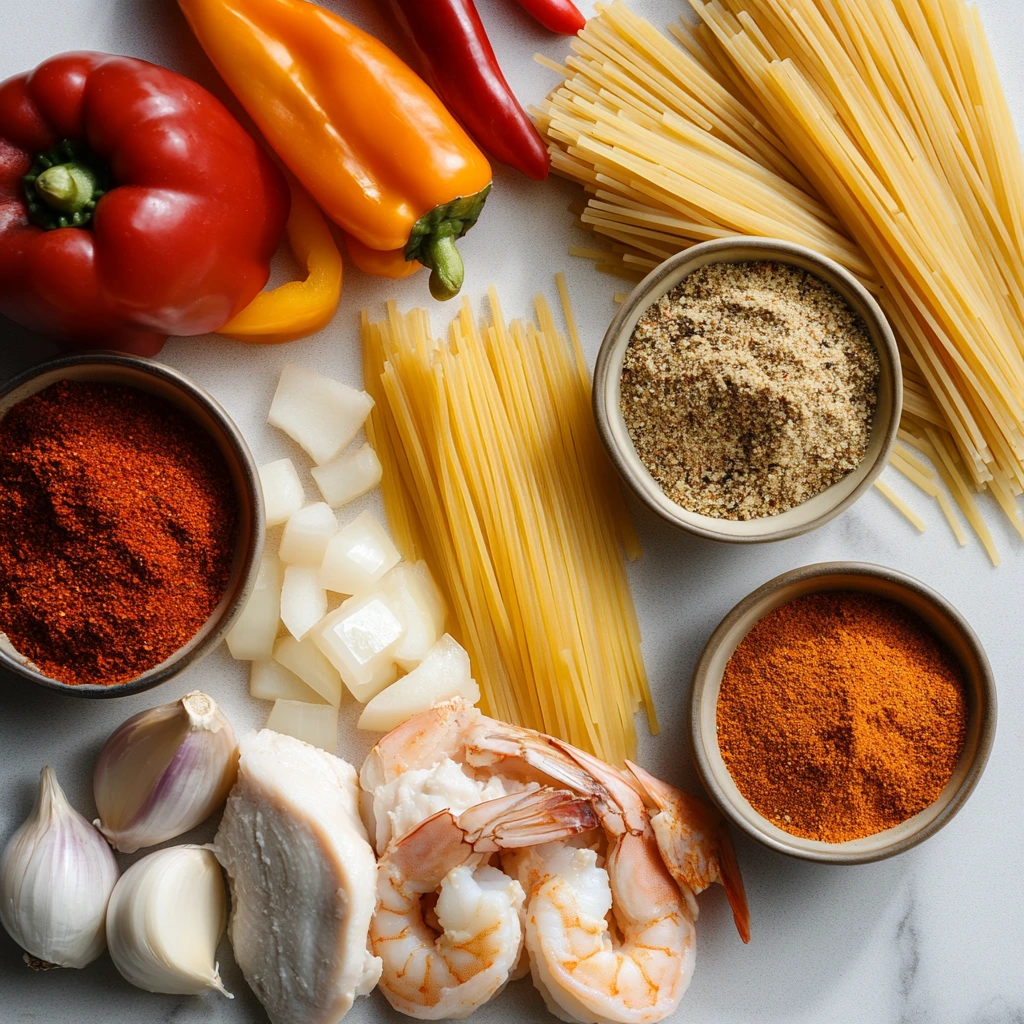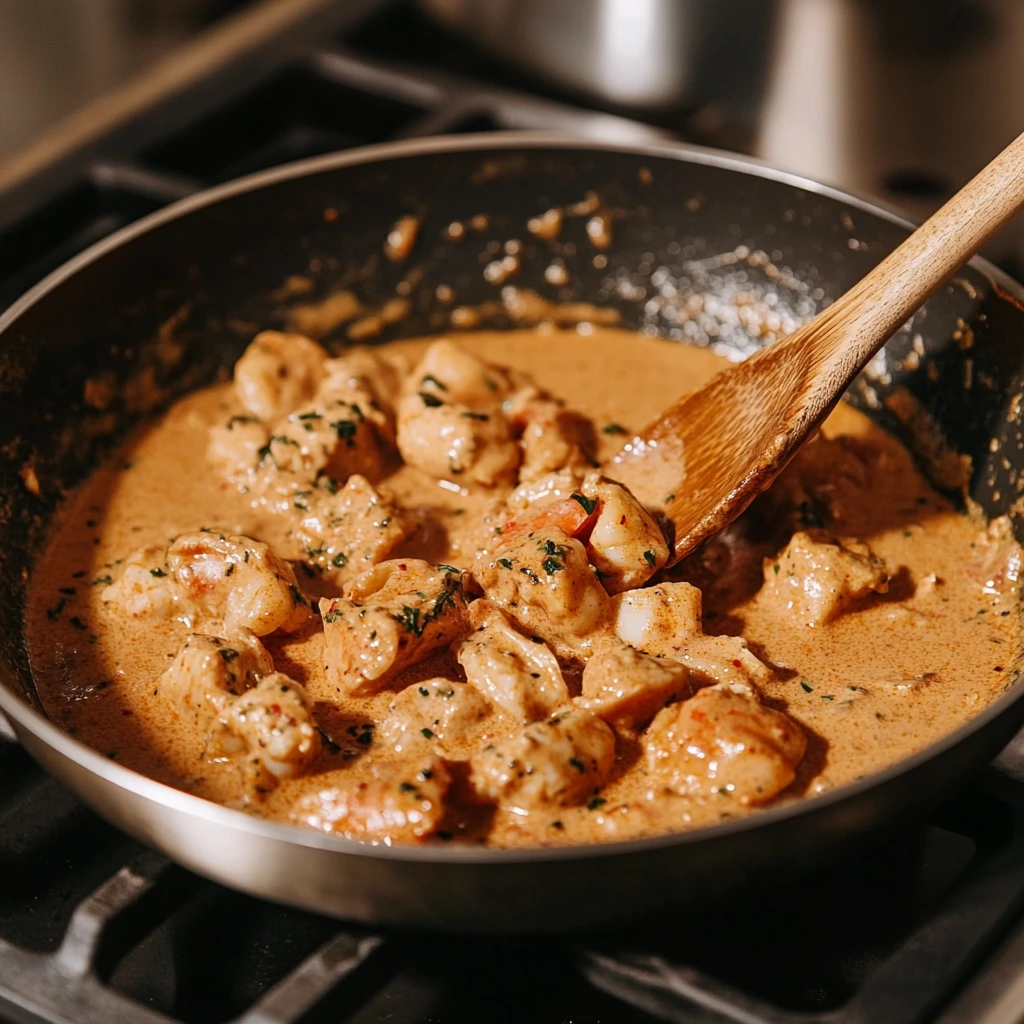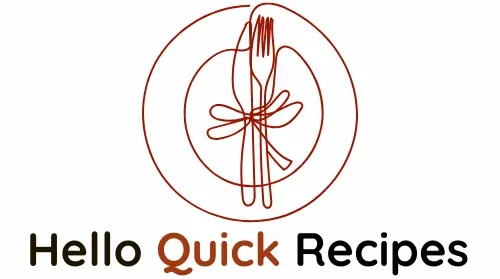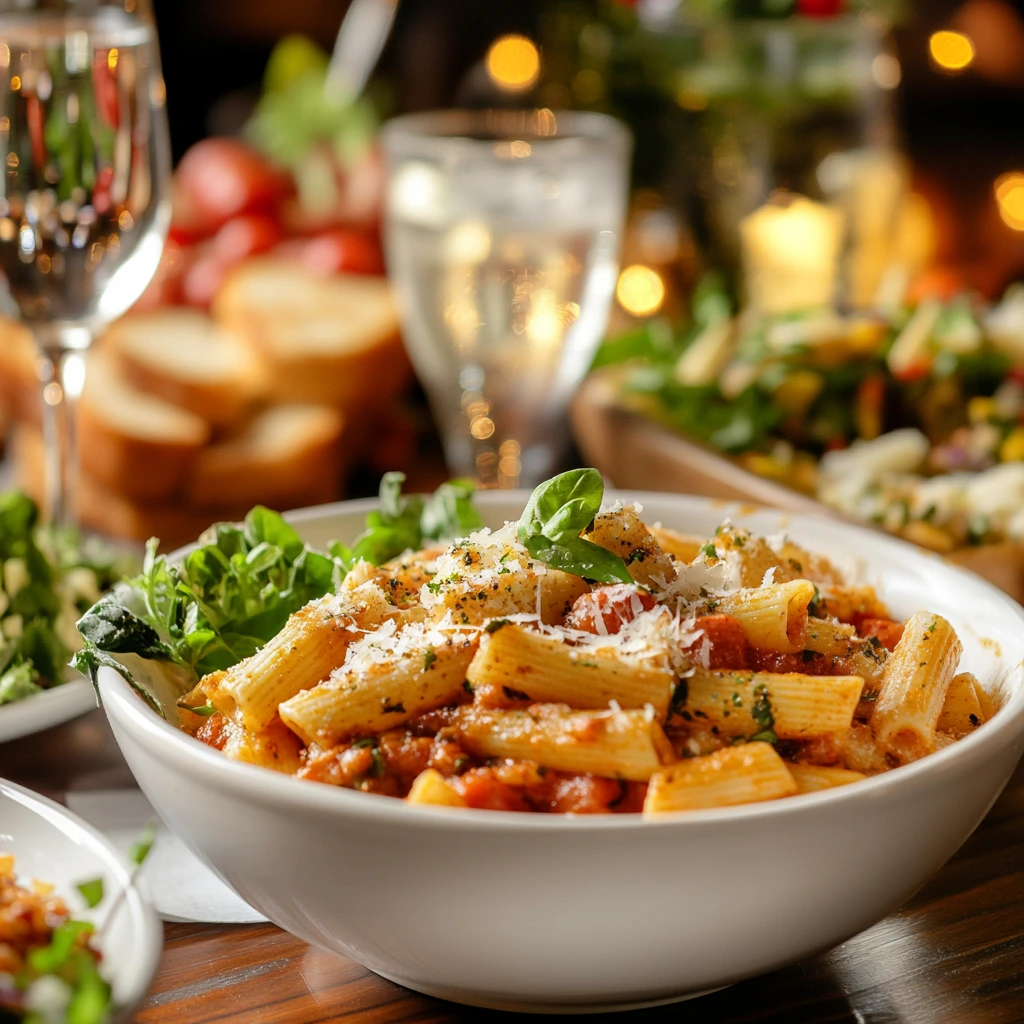Cajun pasta recipe is a flavorful fusion dish that combines the bold, spicy seasonings of Cajun cuisine with the comforting textures of pasta. This ultimate guide will delve into its origins, ingredients, and step-by-step instructions to help you master this delectable dish.
Table of Contents
1. History of Cajun Cuisine and Its Influence on Pasta
Cajun cuisine traces its roots back to French-speaking Acadian settlers in Louisiana. Known for its bold use of spices, hearty ingredients, and simple cooking techniques, Cajun food evolved from a necessity to make use of available resources. When Italian immigrants arrived in Louisiana, pasta was introduced to the Cajun culinary repertoire, resulting in this delightful fusion.
- French Influence: The Cajun tradition stems from French cooking methods, such as creating rich roux-based sauces that complement pasta beautifully.
- Fusion Development: Combining Cajun spices with pasta showcases the adaptive, inventive spirit of Cajun culture.
Why Cajun Pasta is a Popular Choice
Cajun pasta has become a beloved dish for several reasons, and each of them contributes significantly to its widespread popularity.
Firstly, the bold flavors, including smoky paprika, zesty garlic, and fiery cayenne, work together harmoniously to create a flavor-packed dish that excites the palate.
Furthermore, its versatility allows you to customize it effortlessly with proteins like chicken, shrimp, or sausage, which means it can cater to a wide variety of tastes and preferences.
In addition, the ease of preparation makes it an ideal choice for both weeknight dinners and gourmet gatherings, as it is a one-pan wonder that saves time without compromising flavor.
Moreover, the combination of comfort and spice is another key factor, as the creamy sauce perfectly balances the heat, offering a dish that is not only satisfying but also incredibly comforting.
Ultimately, this introduction sets the stage for an in-depth exploration of crafting the perfect Cajun pasta recipe, ensuring that even beginners can successfully create this restaurant-quality dish at home.
2. Key Ingredients for Authentic Cajun Pasta Recipe
Cajun pasta’s bold flavors and creamy texture come from carefully selected ingredients that work harmoniously to create an authentic culinary experience. Let’s explore the key components that make this dish truly stand out.

1. Essential Cajun Spices
The heart of Cajun pasta lies in its seasoning blend, which infuses the dish with depth and spice. Here are the must-have spices:
- Paprika (Smoked or Sweet): Adds a smoky undertone and vibrant color.
- Cayenne Pepper: Provides the signature heat typical of Cajun cuisine.
- Garlic Powder and Onion Powder: Deliver robust, savory flavor profiles.
- Dried Herbs: Thyme, oregano, and parsley bring aromatic notes and balance.
- Salt and Black Pepper: Enhance and unify the dish’s flavors.
These spices can be adjusted to suit your preferred level of heat and intensity, making the dish as mild or fiery as desired.
2. Selecting the Right Protein (Chicken, Shrimp, Sausage)
Protein selection adds variety and richness to Cajun pasta. Each option offers its unique flavor and texture:
- Chicken: Boneless, skinless chicken breasts or thighs are versatile and absorb the Cajun seasoning beautifully. Sear or grill for extra smokiness.
- Shrimp: Fresh or frozen shrimp bring a sweet, briny contrast to the spice, making them a popular choice.
- Andouille Sausage: A quintessential Cajun ingredient, this smoked sausage contributes robust, smoky flavors and a hearty texture.
For an indulgent version, combine multiple proteins for a richer, more complex dish.
3. The Role of Cream and Pasta Choices
- Cream: A creamy sauce made with heavy cream or half-and-half balances the spice, creating a luscious texture. Some recipes may include cream cheese or Parmesan for added richness.
- Pasta Choices: Opt for sturdy pasta like penne, fettuccine, or linguine, which hold the creamy sauce and seasoning well. Gluten-free or whole-wheat options can also be used for dietary preferences.
By using these key ingredients, you’ll lay the foundation for a flavorful, authentic Cajun pasta that’s sure to delight.
3. Step-by-Step Cajun Pasta Recipe
Crafting the perfect Cajun pasta recipe involves a series of simple yet precise steps. Each phase focuses on ensuring the proteins, sauce, and pasta come together harmoniously for a flavorful, satisfying dish.
1. Preparing the Protein
- Seasoning the Protein:
- Generously coat your chosen protein (chicken, shrimp, or sausage) with Cajun seasoning. Ensure even coverage for maximum flavor.
- Cooking the Protein:
- Heat a large skillet over medium heat with a drizzle of oil.
- For chicken: Sear on both sides until golden brown and cooked through (internal temperature of 165°F). Slice into strips.
- For shrimp: Sauté until they turn pink and opaque, about 2-3 minutes per side.
- For sausage: Slice and brown the pieces in the skillet until heated through and slightly crispy.
- Remove the protein from the skillet and set aside.
2. Making the Cajun Sauce
- Sautéing Aromatics:
- In the same skillet, add a bit of butter or oil and sauté diced onions, minced garlic, and bell peppers until softened.
- Building the Sauce:
- Sprinkle additional Cajun seasoning over the sautéed vegetables.
- Deglaze the skillet with chicken broth or white wine, scraping up browned bits for extra flavor.
- Stir in heavy cream and, optionally, grated Parmesan cheese. Let the sauce simmer gently until it thickens slightly.
- Adjusting the Flavor:
- Taste and adjust seasoning with salt, pepper, or extra Cajun spices as needed.
3. Cooking the Pasta to Perfection
- Choosing the Right Pasta:
- Boil pasta like penne, fettuccine, or linguine in salted water until al dente, following the package instructions.
- Reserving Pasta Water:
- Before draining, save a cup of pasta water to adjust the sauce consistency later, if needed.
4. Combining All Elements

- Bringing It Together:
- Add the cooked pasta to the skillet with the Cajun sauce. Toss to coat the pasta thoroughly.
- Return the protein to the skillet, mixing gently to combine with the sauce and pasta.
- If the sauce feels too thick, stir in a splash of reserved pasta water until the desired consistency is achieved.
- Finishing Touches:
- Garnish with freshly chopped parsley, a squeeze of lemon juice (for shrimp), or a sprinkle of Parmesan cheese for added flavor.
- Serving:
- Serve immediately, accompanied by crusty bread or a fresh salad, for a complete meal.
By following these steps, you’ll create a well-balanced Cajun pasta dish with rich flavors and a perfect texture.
4. Customizing Your Cajun Pasta Recipe
Cajun pasta is a versatile dish that can be easily customized to meet various dietary preferences, spice tolerances, and flavor profiles. Here’s how you can make it your own.
Substitutions for Dietary Preferences (Vegetarian, Vegan, Gluten-Free)
- Vegetarian Options:
- Replace the protein with hearty vegetables like mushrooms, zucchini, or eggplant.
- Use plant-based sausage or tofu, seasoned with Cajun spices, for added texture and protein.
- Vegan Options:
- Swap heavy cream for coconut cream, cashew cream, or unsweetened almond milk thickened with cornstarch.
- Use vegan Parmesan or nutritional yeast for a cheesy flavor.
- Ensure your Cajun seasoning blend doesn’t contain animal-derived ingredients.
- Gluten-Free Options:
- Use gluten-free pasta made from rice, quinoa, or chickpeas.
- Double-check that all seasonings and sauces (like broth) are gluten-free.
Adjusting the Spice Level
- Mild Version:
- Reduce or omit cayenne pepper and opt for mild paprika instead.
- Add more cream or a splash of milk to dilute the heat.
- Spicy Version:
- Increase the cayenne or add hot sauce for an extra kick.
- Incorporate sliced jalapeños or crushed red pepper flakes during cooking.
- Customizable Heat:
- Serve the dish with additional hot sauce or Cajun seasoning on the side, allowing each person to adjust the spice level.
Adding Extra Veggies and Toppings
- Extra Vegetables:
- Enhance the nutritional value and flavor with bell peppers, cherry tomatoes, spinach, broccoli, or asparagus.
- Roast or sauté these vegetables before mixing them into the pasta.
- Toppings:
- Garnish with fresh herbs like parsley or cilantro for brightness.
- Add a dollop of sour cream or Greek yogurt to cool down a spicy dish.
- Sprinkle crispy bacon bits or toasted breadcrumbs for added texture.
By making these adjustments, you can create a Cajun pasta dish that aligns with your dietary needs and personal taste, ensuring everyone at the table enjoys a delicious, satisfying meal.
5. Serving and Presentation Tips: Cajun Pasta Recipe
A well-prepared Cajun pasta deserves thoughtful presentation and pairings to elevate the dining experience. Here are some tips to ensure your dish looks as good as it tastes.
1. Plating Cajun Pasta for Maximum Appeal
- Layering for Visual Impact:
- Use a shallow pasta bowl to showcase the sauce and garnishes. Start with a base of creamy Cajun pasta and top it with sliced protein (chicken, shrimp, or sausage) arranged neatly.
- Garnishes for Color and Texture:
- Sprinkle freshly chopped parsley or cilantro for a vibrant green contrast.
- Add a light dusting of Parmesan or red pepper flakes for extra flair.
- Place a lemon wedge on the side for shrimp-based versions to add a pop of color and freshness.
- Finishing Touch:
- Drizzle a small amount of olive oil or reserved sauce around the edges for a polished, restaurant-style look.
2. Side Dishes That Pair Well
- Garlic Bread:
- A classic accompaniment, perfect for sopping up the creamy sauce. Opt for a crusty baguette or soft rolls brushed with garlic butter.
- Fresh Salad:
- A crisp Caesar salad or mixed greens with a tangy vinaigrette balances the richness of the pasta.
- Roasted Vegetables:
- Charred asparagus, zucchini, or Brussels sprouts provide a smoky, earthy contrast to the dish’s spice.
- Cornbread or Biscuits:
- Southern-style cornbread or flaky biscuits complement the Cajun flavors seamlessly.
3. Best Beverages to Accompany Cajun Pasta
- Beer Options:
- A crisp lager or pale ale cuts through the richness, while a wheat beer adds subtle sweetness.
- Non-Alcoholic Choices:
- Sweet iced tea or a citrus-infused sparkling water refreshes the palate.
By combining thoughtful plating, complementary side dishes, and well-matched beverages, you’ll create a memorable Cajun pasta dining experience that delights both the eyes and taste buds.
6. Common Mistakes to Avoid When Making Cajun Pasta
- Overcooking Protein or Pasta:
To achieve the perfect Cajun pasta recipe, avoid overcooking your protein or pasta, as it can result in a mushy texture. For a detailed protein-based pasta variation, explore Cajun Shrimp Chicken Pasta, where proper cooking methods elevate the dish’s quality. - Using the Wrong Spices or Ratios:
Using authentic Cajun spices in the right proportions is essential. If you’re looking for inspiration, recipes like Chicken and Shrimp Pasta Without Cream showcase alternative ways to balance flavors without overpowering the dish. - Skipping the Cajun “Base” Steps:
Building a flavorful Cajun base is a non-negotiable step for an authentic taste. For more insights, see how techniques differ in Cajun Chicken and Shrimp Alfredo Pasta, where foundational flavors are key.
7. Healthier Alternatives for Cajun Pasta
- Lower-Calorie Ingredient Swaps:
For a lighter twist, consider swapping heavy cream for lower-fat alternatives like Greek yogurt. Another approach can be found in recipes like Chicken and Shrimp Pasta with Tomato Sauce, which use a tangy, lighter base instead of cream. - Managing Portion Sizes:
Portion control is vital for a balanced meal. A similar approach is evident in Cajun Chicken and Shrimp Penne Pasta, where smaller serving sizes still pack robust flavors. - Creating a Balanced Meal:
Pairing your Cajun pasta with healthy side dishes or adding more vegetables to the dish itself creates a balanced meal. For ideas on complementary ingredients, explore Chili’s Cajun Chicken Pasta Recipe, which highlights thoughtful combinations.
8. History and Cultural Significance of Cajun Pasta
Origin of Cajun Cuisine
Cajun cuisine has a rich history that is deeply rooted in the culture of French-speaking Acadian settlers. Notably, their migration to Louisiana brought cooking techniques that emphasized the use of local ingredients and bold flavors. Moreover, these techniques evolved over time to incorporate African, Spanish, and Native American influences, resulting in the vibrant cuisine we enjoy today. Thus, Cajun pasta represents a delicious adaptation of this heritage, combining global inspirations with regional ingredients.
Fusion of Traditional and Modern Flavors
Although Cajun pasta recipe draws heavily from traditional Cajun flavors, it blends them seamlessly with modern culinary trends. For example, the addition of creamy sauces and pasta reflects Italian influences, while the bold Cajun spices maintain the dish’s authenticity. Furthermore, its versatility allows cooks to experiment with proteins and vegetables, creating a perfect balance between tradition and innovation. As a result, Cajun pasta has become a beloved dish that bridges the gap between classic and contemporary tastes.
9. Frequently Asked Questions About Cajun Pasta
What Makes Cajun Pasta Different from Other Pastas?
Cajun pasta stands out because of its bold, smoky, and spicy flavors derived from Cajun seasoning blends. In addition, it incorporates unique ingredients like andouille sausage or shrimp, which are not typically found in Italian-style pastas. Therefore, its distinct taste and cultural roots make it a flavorful alternative to other pasta dishes.
Can I Use Pre-Made Cajun Seasoning?
Absolutely, pre-made Cajun seasoning works well for convenience. However, if you prefer to customize the spice level or adjust specific flavors, you can easily create your own blend at home. In any case, both options can produce a delicious result.
How Can I Make Cajun Pasta Less Spicy?
To tone down the spice, you can reduce the amount of cayenne pepper or hot spices in the seasoning mix. Additionally, adding more cream or incorporating ingredients like diced tomatoes can help mellow the heat without compromising flavor. Ultimately, adjusting the spice level ensures that everyone can enjoy the dish.
Is Cajun Pasta Suitable for Meal Prepping?
Yes, Cajun pasta is an excellent choice for meal prepping, as it stores well and retains its flavor over time. Furthermore, its versatility allows you to prepare different variations by alternating proteins or adding more vegetables, keeping your meals interesting throughout the week.
What Are the Best Ways to Store and Reheat Cajun Pasta?
For best results, store Cajun pasta in an airtight container in the refrigerator for up to three days. When reheating, use a stovetop with a splash of water or broth to prevent the sauce from drying out. Alternatively, you can microwave it, stirring occasionally for even heating.
Can I Freeze Cajun Pasta?
Certainly, Cajun pasta can be frozen, though it’s best to freeze it without cream-based sauces, as they can separate when thawed. Instead, prepare the dish up to the point of adding cream, and freeze the base. Later, you can add the cream when reheating for a fresher, smoother texture.

